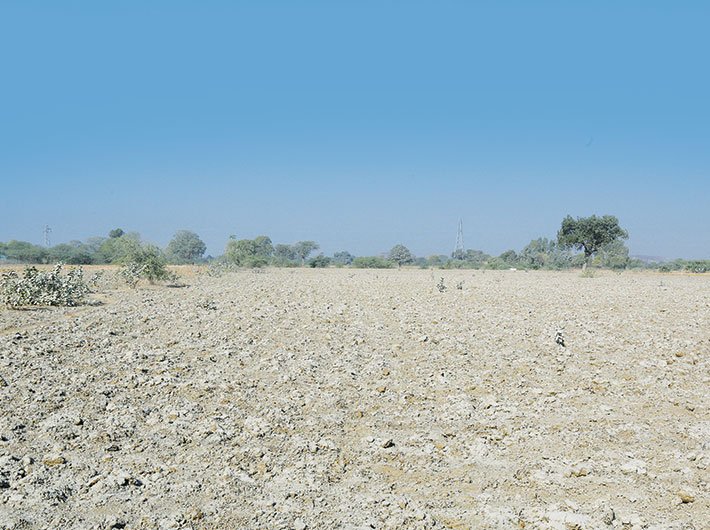Scientists have declared 2016 as the hottest year since 1880. Population growth, climate change and accompanying extreme weather events are a problem we can no longer ignore
The National Aeronautics and Space Administration (NASA) and the National Oceanic and Atmospheric Administration (NOAA), in independent analyses, have declared 2016 the hottest year since 1880. Scientists have said that the planet witnessed three consecutive years of record heat.
The rise in global temperature in these years has been mostly due to human influence. According to the fifth assessment report of the Intergovernmental Panel on Climate Change, 2014, “human influence on the climate system is clear, and recent anthropogenic emissions of greenhouse gases are the highest in history.”
Though the global mean temperature has been more or less stable for the last 11,000 years, the global surface temperature, on an average, has risen by 0.8 degree centigrade since 1880. In the last 100 years, each decade, broadly speaking, has been warmer than the previous one.
The World Bank’s report, ‘Turn Down the Heat: Why a 4°C Warmer World Must be Avoided’, released in 2012 forecasts that by the end of the century, global temperature may rise by 4 degree centigrade above the pre-industrial level (before 1750). This is likely to create devastating conditions, mainly to the poor and vulnerable, and may play havoc to the existence of humans and earth in the long run.
Rise in sea level
The sea level has risen by 20 centimetres since 1880 – a result of global warming. This spike has taken place in last two decades; the seal level had been stable for the past 2,000 years before the late 19th century. Not only is warming of seawater due to rising temperature making water expand, melting of mountain glaciers and big ice sheets of Antarctica and Greenland are also raising the level. By the end of the century, the sea level is tipped to rise approximately by 1 metre in the absence of any mitigation measures and by 0.6 metre if measures are undertaken.
Moreover, the rise will not stop by the end of 2100 as glaciers respond slowly to rising temperature. By effect, even if we slow down global warming, the consequent impact on melting of glaciers will not be immediate. The Greenland ice sheet has enough ice to raise the sea level by 7 metres if completely melt, which is possible beyond a threshold level of temperature! And one of the glaciers – Totten glacier – of the Antarctic ice sheet, which faces the risk of melting, could raise the sea level by 3 metres. The complete melting of the Antarctic glacier has the potential to raise the sea level by 60 metres, which is also possible if we burn all the fossil fuels existing on earth.
Paris climate deal
Scientists suggest that the globe can afford the rise of its temperature by 2 degree centigrade from the pre-industrial level. Beyond this point, the impacts of climate change will be irreversible. The small island countries in the Pacific however fear that this level of rise may be catastrophic to them. Meanwhile, a recent paper by William Nordhaus, an economist at Yale University, questions the feasibility of achieving the 2 degree target set in the Paris deal.
The Paris Climate Agreement, adopted in December 2015, aims at “holding the increase in the global average temperature to well below 2°C above pre-industrial levels and pursuing efforts to limit the temperature increase to 1.5°C”.
Most of the members submitted the intended nationally determined contributions (INDCs) before the Paris deal. INDCs specify the voluntary target by a country to cut emission of greenhouse gases by a specified timeframe. India has committed to cut the emission intensity by 33-35 percent by 2030 from the 2005 levels. As part of the commitment towards increased use of alternative energy, it has committed to adopt 40 percent of non-fossil fuel energy by 2030.
Effects of climate change in India
As many as four states have suffered floods in the last few years. They include: Uttarakhand in 2013, Jammu and Kashmir in 2014 and 2015, and Assam and Arunachal Pradesh in 2016. We regularly hear about the fury of floods in Bihar. Add to this, India has been reeling under drought for more than two years now, affecting farmers and the whole economy. Drought and floods are not new to India, but their frequency and intensity in recent years have been worrying. The inference: impact of climate change is getting starker day by day in India as well.
Since agriculture in India is predominantly rain-fed, the risks of climate change on food production and food security could be immense; predictions include low availability of water and health hazards.
The melting of the Himalayan glaciers could increase the flow of water in the Brahamaputra river system and the Indus system. The sea level rise would inundate the coastal areas and affect people’s livelihood sparking displacement, migration and conflicts.
Challenge remains
India’s GDP growth was 7.6 percent in 2015-16. It aims to grow at 9-10 percent per annum. Pro-growth economists say that economic growth is a pre-condition to poverty alleviation and to finance welfare schemes. But, economic growth has a direct correlation with energy consumption. As things stand today, the dominant mode of energy in India is fossil fuel (coal, oil and natural gas) that emits greenhouse gases contributing to climate change. The days ahead will see how the government plans to shift towards cleaner energy. The challenge for the government is to strike a balance between maintaining economic growth and addressing poverty and still not harm the environment.
Baisakh is associated with Global Call to Action against Poverty (GCAP), which works on the issues of sustainable development and climate change
(The column appears in the February 16-28, 2017 issue)
